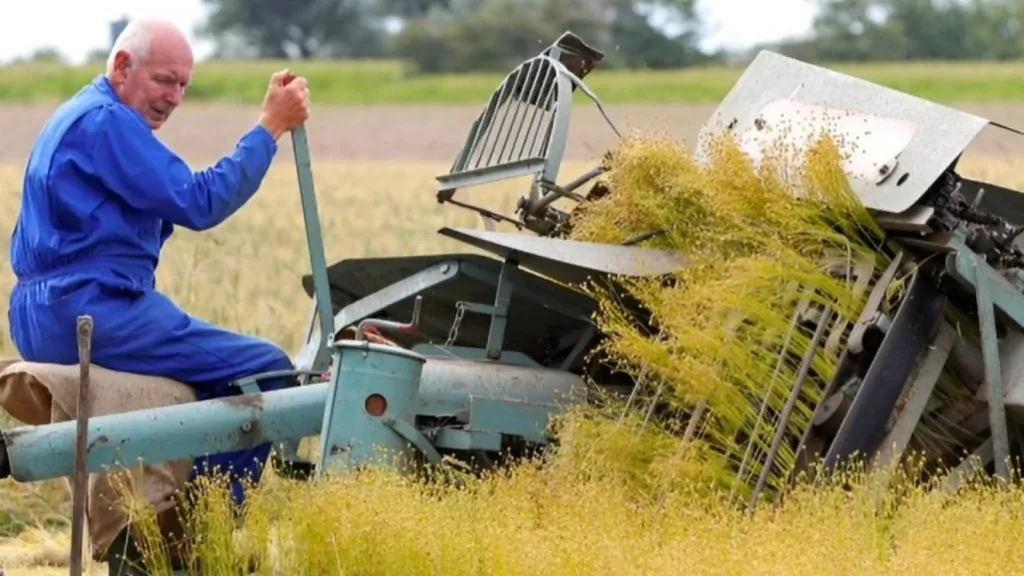Do Dutch farmers succeed in growing 50,000 acres of hemp, straw, elephant grass or other fibers in five years? And to use that to build 30 percent of all homes with natural building materials? Yes, experts say. 'The willingness is there, now the contracts.'
Credits: WeGrow
>
The Dutch construction sector was allowed to emit a total of 47 million tons of CO2 from 2023 to stay within the Dutch target of the Paris Climate Agreement. This states that the earth should not be allowed to warm up by more than 1.5 degrees. The so-called CO2 budget is running out, as the Dutch construction industry is expected to be through its budget of 47 million tons of emissions by 2027.
In 2032, construction's CO2 emissions exceed scenarios to stay within a 1.7 degree warming level. At least, if we continue like this. Building with natural raw materials like wood and fiber crops like hemp, flax, straw or elephant grass can greatly reduce those CO2 emissions.
Will there soon be enough bio-based building materials?
What will that take? Farmers who grow fiber crops, factories that process these crops into building products, contractors who will build with biobased building materials and project developers, investors and housing corporations who will commission them to do so. That, in jargon, is called forming a chain.
Since the Dutch government launched the National Approach to Biobased Building (NABB) two years ago and made 200 million subsidy available for it, things have been going fast. Tens of thousands of homes are now being built and insulated with natural materials.
The big question now is: can builders buy enough natural raw materials from Dutch farmers in five years to build enough biobased homes? That was the issue at the annual congress of WeGrow, the platform on biobased building and remodeling. Through the Benchmark Biobased Building, WeGrow and knowledge institute Duurzaam Gebouwd outlined the state of the art.
Farmers want to
.Let's start with farmers. According to the national approach, 50,000 hectares of farmland, i.e. 100,000 soccer fields, should be growing crops for construction by 2030. By 2035, as many as 150,000 acres. By the end of 2024, this was happening on 7,500 hectares. There, mainly hemp and flax were grown. 'The willingness to start growing the crops is there, but we are not there yet,' says Lars Hillewaere, business developer carbon farming at LTO Bedrijven. 'We see that a lot of farmers are already starting to do this, even though they are not yet sure about sales.'"
Now many natural building materials still come from abroad. 'As LTO we don't want to get those from abroad, but those crops are often already a lot further along than in the Netherlands. So we can learn from the countries around us and get knowledge and materials from abroad, as long as the supply from the Netherlands is small,' says Hillewaere.
Limburg shares knowledge
.In terms of cultivation, the provinces of Drenthe and Groningen (hemp) and Zeeland and Flevoland (flax) are leading the way. According to sustainable agriculture project leader Patrick Lemmens of the Limburg Agriculture and Horticulture Association (LLTB), Dutch growers should be encouraged to change. 'We are talking about biobased here. Maybe that should be followed by dutch-based,' he says. 'Let's not only produce food for our mouths, but also for knowledge and innovation in our country.'
To encourage growers to switch to new crops, the union has set up the platform new crops Limburg. This works together with Wageningen University, large companies and colleges. It gives demonstrations, conducts research and allows farmers to share knowledge among themselves. 'Despite the political headwinds, the cultivation of fiber crops is really taking off and cannot be stopped,' Lemmens says.